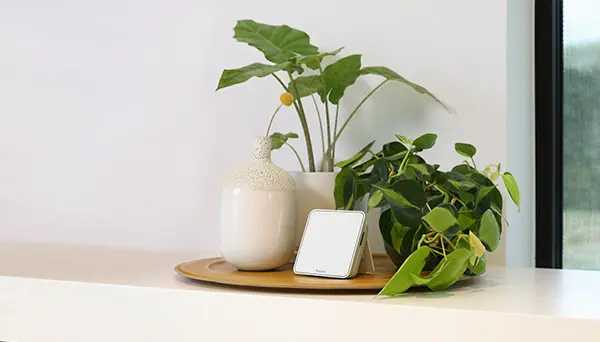
Damp issues in the house
How do you recognise damp issues in the house, and how do you solve them?
Damp stains, mould and condensation are common problems that many have experienced in their homes. Damp is a persistent enemy that can affect both your health and the structure of your home. At the first signs of damp, it is important to act quickly. Better yet, prevent damp from settling into your home with an effective and reliable ventilation system.
How does moisture get into your home?
Every day, our daily activities create moisture in the air. We breathe and sweat, which produces 300-400 ml of water per person, as well as releasing moisture when we shower, cook, wash dishes or clean. In total, each person generates approximately 10 litres of moisture per day. Therefore, inadequate ventilation can quickly lead to humidity problems in the home.

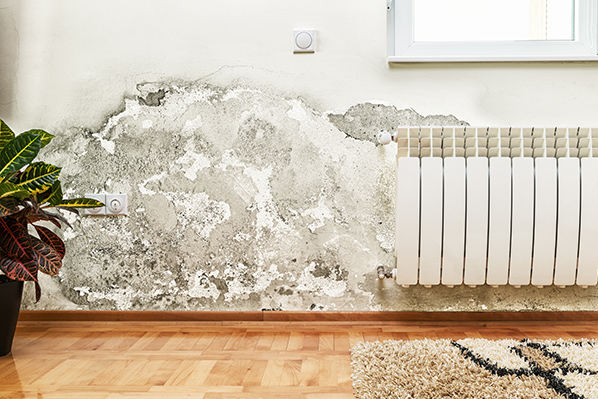
Penetrating moisture
Penetrating moisture originates when precipitation passes through porous exterior walls, infiltrating interior walls through the cladding cavity.
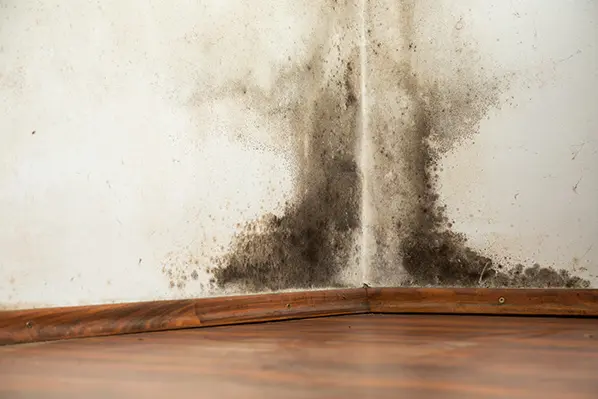
Rising damp
Rising damp occurs when water rises through porous materials such as stone or concrete, causing interior walls to become damp.
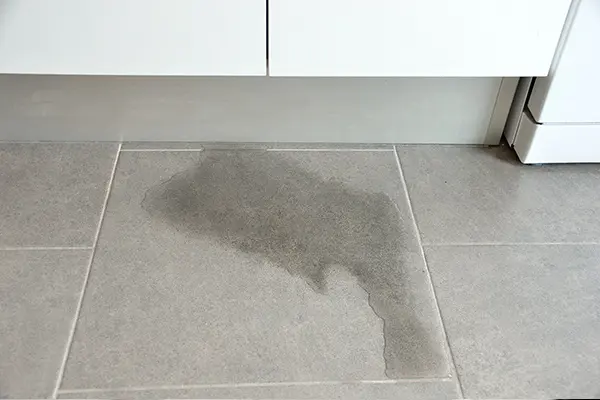
Leaks
Water leaks can cause humidity problems in older homes or construction faults. Bad connections, worn or broken pipes are the main causes.
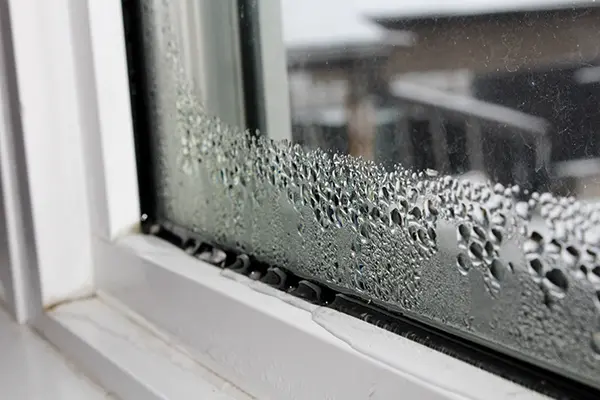
Condensation
Condensation occurs when moist air comes into contact with cold surfaces, such as a fogged mirror after a shower or a wet surface while cooking.
Avoid humidity problems in your home with good ventilation
Most humidity problems occur when moist air condenses on cold surfaces, such as windows, walls and ceilings. The good news is that a reliable ventilation system eliminates this risk by extracting moist air before condensation forms.
The Renson® mechanical exhaust ventilation system operates automatically and on demand. Its integrated detectors continuously measure the humidity in the indoor air. If the humidity level exceeds the threshold, the system automatically intervenes, replacing the humid air with fresh, dry air from outside. As it only acts where necessary, energy waste is avoided.
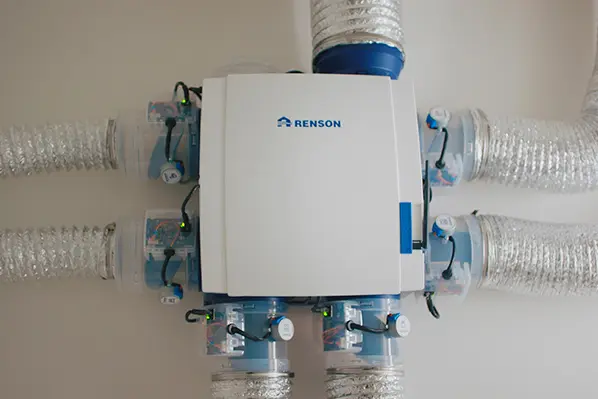
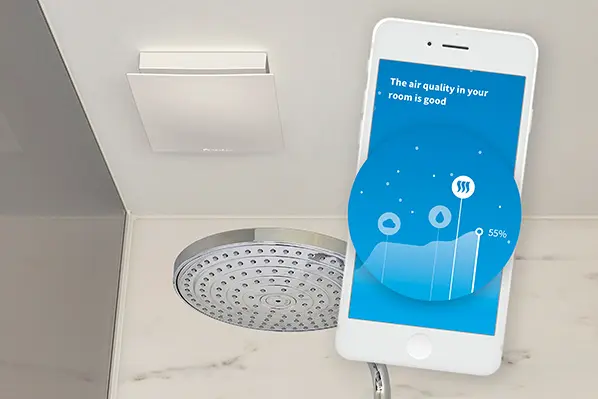
CENTRALIZED VENTILATION SYSTEM
Do you want to enjoy healthy air in every room? A central ventilation system improves indoor air quality throughout the house. In this system, a central unit controls the fans in all spaces, ensuring continuous monitoring of air quality. Thanks to its demand-based operation, it always ensures the right level of ventilation without effort.
DECENTRALIZED VENTILATION SYSTEM
Do you need a ventilation solution for a specific room? Are you renovating and want to prioritise ventilation? Or do you have problems with humidity or mould in the bathroom? A decentralized ventilation system improves air quality in specific spaces efficiently and according to demand.
Measuring the humidity level in the home
If you are unsure whether you need a ventilation system, Renson® Sense will give you a clear overview of the air quality in your home. As well as measuring CO2 levels, it also assesses humidity and issues alerts when levels are too high. Their app gives you access to a detailed history of indoor air quality, helping you identify potential humidity problems and decide if it's the right time to invest in a ventilation solution.
